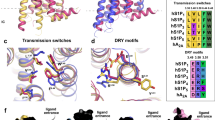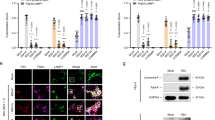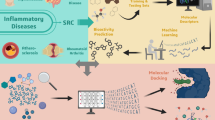Abstract
IT has been suggested recently that lipid substances may play a part in the mediation of inflammatory events1,2. One of these lipids, slow reacting substance C (SRS-C), probably an unsaturated fatty acid or derivative, is released when egg yolk lecithin or guinea-pig lung is challenged by venoms containing phospholipase A3. Another liposoluble spasmogen which is released by guinea-pig lung during in vitro anaphylaxis is called slow reacting substance A (SRS-A)2. SRS-A increases the resistance of lungs to inflation and this activity is blocked by non-steroidal anti-inflammatory agents4. The structure of SRS-A has not yet been elucidated, but the pharmacological activity on isolated human tracheal muscle of at least one identified lipid derivative, prostaglandin F2a (PGF2a), was blocked by the same agents1. Here we present evidence of the pharmacological activity of SRS-C and its blockade by non-steroidal anti-inflammatory agents. We suggest that in some preparations SRS-C may share the same receptor sites as the polypeptide kinins, or block the route from the specific receptors for the agonists.
This is a preview of subscription content, access via your institution
Access options
Subscribe to this journal
Receive 51 print issues and online access
$199.00 per year
only $3.90 per issue
Buy this article
- Purchase on SpringerLink
- Instant access to full article PDF
Prices may be subject to local taxes which are calculated during checkout
Similar content being viewed by others
References
Collier, H. O. J., and Sweatman, W. J. E., Nature, 219, 864 (1968).
Brocklehurst, W. E., J. Physiol., 151, 416 (1960).
Vogt, W., in Recent Advances in the Pharmacology of Toxins, Proc. Second International Pharmacological Meeting (Stockholm, 1963).
Berry, P. A., Collier, H. O. J., and Holgate, J., J. Physiol., 165, 41P (1963).
Boquet, P., Izard, Y., Meaule, J., and Jouannet, M., Ann. Inst. Pasteur, 112, 213 (1957).
Singleton, W. S., Gray, M. S., and Brown, M. L., J. Amer. Chem. Oil Soc., 42, 53 (1965).
Konzett, H., and Rössler, R., Arch. Exp. Path. Pharmak., 195, 71 (1940).
Vargaftig, B. B., Experientia, 22, 182 (1966).
Boquet, P., Dworetzky, M., and Essex, H. E., Amer. J. Physiol., 161, 561 (1950).
Feldberg, W., Holden, H. E., and Kellaway, C. H., J. Physiol., 94, 234 (1938).
Vogt, W., Meyer, H., Kunze, H., Lufft, E., and Babilli, S., Arch. Pharmak. Exp. Path., 262, 124 (1969).
Jaques, R., Helv. Physiol. Acta, 23, 156 (1965).
Dakhil, T., and Vogt, W., Arch. Exp. Path. Pharmak., 243, 174 (1962).
Collier, H. O. J., James, G. W. L., and Schneider, G., Nature, 212, 411 (1966).
Author information
Authors and Affiliations
Rights and permissions
About this article
Cite this article
VARGAFTIG, B., DE MIRANDA, E. & LACOUME, B. Inhibition by Non-steroidal Anti-inflammatory Agents of in vivo Effects of “Slow Reacting Substance C”. Nature 222, 883–885 (1969). https://doi.org/10.1038/222883a0
Received:
Revised:
Issue date:
DOI: https://doi.org/10.1038/222883a0
This article is cited by
-
The pharmacology of slow reacting substance C and of arachidonic acid
Agents and Actions (1994)
-
Identification of vasopressor phospholipid in crude soybean lecithin
Lipids (1978)
-
Aspects of release of pharmacologically active substances from the lungs by chemical stimuli
Agents and Actions (1976)
-
Haemorrhagic and permeability increasing effects of ‘Bothrops jararaca’ and other crotalidae venoms as related to amine or kin in release
Agents and Actions (1974)
-
Platelet Aggregation induced by Arachidonic Acid is accompanied by Release of Potential Inflammatory Mediators distinct from PGE2 and PGF2
Nature New Biology (1973)



